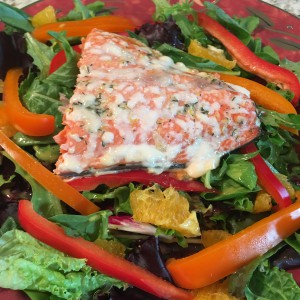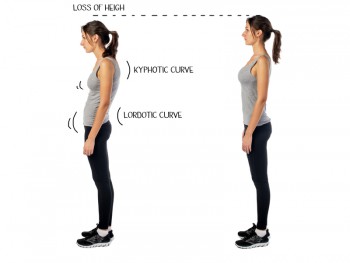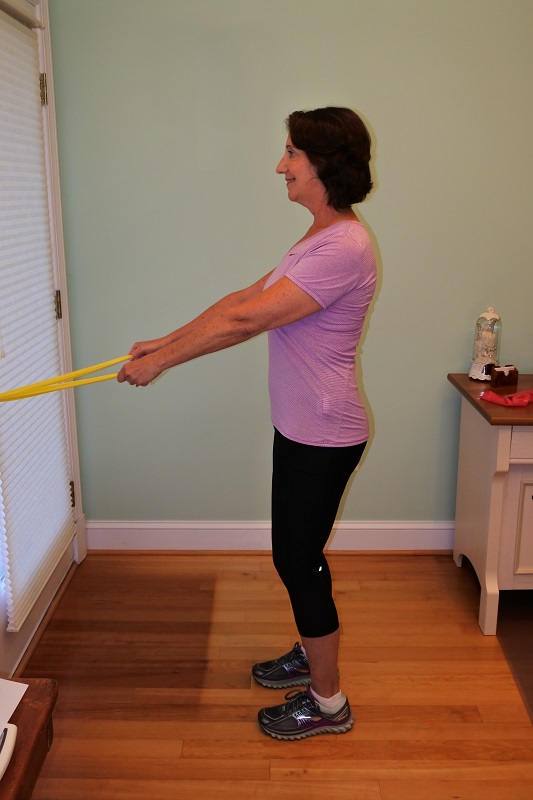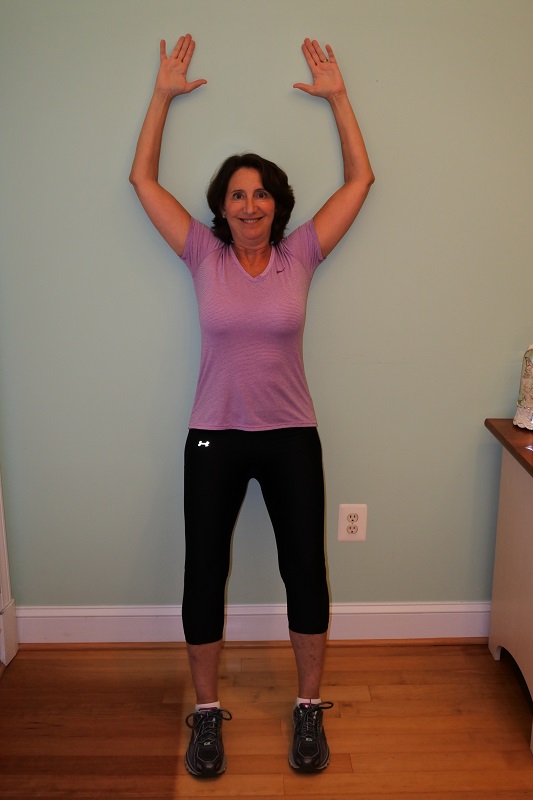
by Susan Brady | Jul 20, 2017 | Nutrition

What are you going to eat today?
You probably woke this morning thinking about all the important things you have to do today. Some of you will be thinking about decisions involving your work, and others about family or friends. But the truth is, the most important decision you are going to make today is WHAT YOU ARE GOING TO EAT! There is no doubt that the food we consume on a daily basis has a profound effect on our health…..and our bones!
The food you eat along with lifestyle, stress and other environmental factors all have a significant effect on your genes, and therefore your health and longevity. Remembering back to Biology 101, a gene is a segment of your DNA that we acquire from our parents. These genes are responsible for our physical traits, our biochemistry and, to some extent, even our behaviors. Some genes may also carry the risk of certain diseases and disorders that are passed on from parents to children. Although it was once thought that your genes were hard wired, there is now growing evidence that your genes have some give. Epigenetics, a rising new field in the study of genetics focuses on how the activation of a gene can be influenced by diet or environment, yet the gene itself doesn’t change. Experts explain that genes can be switch on and off, like a light switch that can turn on and off a light. In very simplistic terms, your genes for disease and health can be switched on and off by the quality of the food you eat, stress, lifestyle and environmental toxins.
Several genes that have been identified for a wide variety of cancers, including bladder, breast, colorectal, endometrial, esophageal, head and neck, liver, lung, prostate, and thyroid. And guess what? Researchers have also located several genes associated with determining bone mineral density, bone strength, bone thickness as well as risk of fracture.
OK, so say you have a gene for osteoporosis, or any disease, what can you do about it?
The good news coming out of the field of epigenetics is that your genes don’t control your health, you do! You can influence the expression of your genes on a regular basis, depending on the foods you eat, the air you breathe, the lifestyle you live and the thoughts you think.
How? By preventing damage to your cells!
Anything that causes harm or stress to the body can damage a part of the cell called the mitochondria (Biology 101: the organelle which produces energy in the cell). Damage to the mitochondria can result in turning on the genes that have the potential to cause osteoporosis, disease or cancer. So it is the damage to the mitochondria, not the presence of a disease carrying gene that results in the development of that illness. Even if you inherited a gene for osteoporosis or any disease or cancer, a healthy mitochondria can keep those genes inactive.
So how do you keep your mitochondria healthy and disease in check?
Promote balanced Methylation
Methylation is a key biochemical process that is essential for the proper function of almost all of your body’s systems. It occurs billions of times every second and, in simple terms, it helps to repair and keep your DNA in good “working” condition. Proper methylation keeps our mitochondria and our DNA healthy and is one of the most common epigenetic signaling tool that cells use to lock genes in the “off” position. As we age the methylation processes in our bodies start to slow down leading to less control over gene function, damage to our cells and increased potential for disease. A breakdown in methylation puts you at higher risk for many diseases, including osteoporosis. Recent research indicates that DNA methylation plays an important role in bone metabolism as well as bone mineral density.
Luckily, there are several ways to balance your methylation and keep your cells healthy!
5 Ways you can Balance Methylation and Prevent Damage to your Cells
- Eat a diet rich in nutrients that support proper methylation.
- Dark leafy greens like spinach, kale and beet greens. Cruciferous vegetables like collard greens, bok choy, broccoli, cauliflower and cabbage. Sulfur containing foods like garlic and onions. All these food are among the most abundant sources of the nutrients needed for optimal methylation.
- Foods high in B vitamins are also important in the methylation process as well supporting healthy DNA. Healthy food sources of B vitamins include leafy greens, asparagus, lentils, beans, almonds, walnuts, sunflower seeds, fish, chicken, turkey and eggs.
- Take probiotics or eat foods that support a healthy gut like yogurt, kefir, or fermented foods to help absorb your B vitamins
Avoid/minimize alcohol, caffeine and foods high in sugar which can all deplete B vitamins
- Avoid processed and cans foods which are a poor source of nutrients
- Reduce stress and practice stress relaxation techniques
- Move your body through exercise every day
Even if you had a hard time understanding the biology behind this post, I hope you gained some understanding about how you actually DO have control over your genetic traits. The underlying message is that even if your mother, grandmother, sister or aunt has/had osteoporosis, or any disease, you are not destined to be crippled with it. You are in control of your health and have a tremendous amount of control over how your genes are turned on and off. Changing your diet and lifestyle is the first step to controlling your genes and keeping your bones and body healthy!
Contact Nurtured Bones to aid you in your quest to overcome a genetic trait for osteoporosis and to help you manage your bone loss through effective safe and natural methods.
1. Qin, L., Liu, Y., Wang, Y., Wu, G., Chen, J., Ye, W., . . . Huang, Q. (2016). Computational Characterization of Osteoporosis Associated SNPs and Genes Identified by Genome-Wide Association Studies. Plos One,11(3). doi:10.1371/journal.pone.0150070
2. Liu, Y., Zhang, X., Chen, L., Lin, X., Xiong, D., Xu, F., . . . Liao, E. (2016). Epigenetic mechanisms of bone regeneration and homeostasis. Progress in Biophysics and Molecular Biology, 122(2), 85-92. doi:10.1016/j.pbiomolbio.2016.01.005
3. Reppe, S., Lien, T. G., Hsu, Y., Gautvik, V. T., Olstad, O. K., Yu, R., . . . Gautvik, K. M. (2017). Distinct DNA methylation profiles in bone and blood of osteoporotic and healthy postmenopausal women. Epigenetics,00-00. doi:10.1080/15592294.2017.1345832
4.. DNA methylation and its role in bone formation and resorption. (2012). BoneKEy Reports, 1(2). doi:10.1038/bonekey.2012.45

by Susan Brady | Jul 13, 2017 | Healthy aging
 Although the decline in estrogen that occurs during menopause is the most influential factor for the development of osteoporosis, there are several other mechanisms that contribute to bone loss as we age. One prominent mechanism is through a process called oxidative stress.
Although the decline in estrogen that occurs during menopause is the most influential factor for the development of osteoporosis, there are several other mechanisms that contribute to bone loss as we age. One prominent mechanism is through a process called oxidative stress.
What the heck is oxidative stress? Oxidative stress, simply put, is the damage caused to a cell through oxidation; the interaction the between oxygen molecules and the substances they come in contact with, such as metal or living tissues. When a freshly-cut apple turns brown, the fender of your car becomes rusty or a copper penny turns green you are witnessing oxidation.
Here are just some of the diseases that are caused by oxidative stress:
• Heart Disease
• Cancer
• Arthritis
• Lung Disease
• Fibromyalgia
• Diabetes
• Neurodegenerative Diseases like Parkinson’s and Alzheimer’s
• Autoimmune Diseases
• Eye Diseases like Macular Degeneration
Oxidative stress also contributes to bone loss in both women and men!
It is thought that oxidative stress activates osteoclast production, increasing bone breakdown, while suppressing the osteoblast cells that initiate bone formation.
Many of us are familiar with the term “antioxidants” as nutrients in food that have beneficial health effects. Antioxidant nutrients inhibit oxidation and protect our tissues from the damage caused by oxidative stress. Vitamin C is one of our most powerful antioxidant nutrients.
Studies have shown that vitamin C can reduce oxidative stress, prevent bone loss and reduce fracture risk. It has been shown that not only is dietary intake of vitamin C positively associated with bone mineral density in postmenopausal women, but that an inadequate vitamin C intake could actually increase the risk of osteoporosis. The Framingham Osteoporosis study also noted that women whose diets provided the most vitamin C had significantly fewer fractures than women whose diets provided the lowest amount of vitamin C. Beyond its importance as an antioxidant, vitamin C is also important in collagen formation which helps to build a strong bone matrix and supports the development of osteoblasts, bone building cells.
Considering the importance antioxidant role vitamin C plays in keeping you healthy as well as all the ways it supports strong bones, we should all make sure we are getting enough vitamin C every day. Foods rich in vitamin C include vegetables like peppers, broccoli and Brussels Sprouts and fruits such as papaya, strawberries, pineapples and oranges.
Try this wonderful summer salmon salad which is rich in vitamin C and numerous other bone building nutrients!
Summer Citrus Salmon Salad

[su_spacer size=”1″]
Salmon Marinade
2/3 cup freshly squeezed orange juice (squeeze a full cup to use in both the marinade and the dressing below)
2 tablespoons of RAW honey
3 small cloves garlic, minced
1 tablespoon of fresh thyme, minced
2 teaspoons finely grated orange peel
4 WILD caught salmon fillets, or a 16 oz wild salmon fillet
[su_spacer size=”1″]
Salad
8 ounces of organic mixed salad greens or spinach
½ red bell pepper, thinly sliced
½ yellow or orange bell pepper, thinly sliced
1 shallot, thinly sliced crosswise into rings
Citrus Vinaigrette
2 tablespoons extra virgin olive oil
1 tablespoon white wine vinegar
1/3 cup freshly squeezed orange juice
1 SMALL garlic clove, minced
Freshly ground sea salt and pepper to taste
Preparation:
Whisk or blend marinade ingredients together and place in baking dish. Add salmon, flesh side down in the marinade and marinade for 1-4 hours.
When marinating is complete, pour off marinade and cook salmon (flesh side up) at 350 degrees for 20-25 minutes, depending on your desired level of “doneness.”
Prepare citrus vinaigrette by whisking or blending all ingredients.
Prepare salad by tossing ingredients.
Divide salad on plates, drizzle with vinaigrette. When salmon is cooked to your liking, place salmon on top of salad and serve!
References:
1. Kim, Y. A., Kim, K. M., Lim, S., Choi, S. H., Moon, J. H., Kim, J. H., . . . Shin, C. S. (2015). Favorable effect of dietary vitamin C on bone mineral density in postmenopausal women (KNHANES IV, 2009): discrepancies regarding skeletal sites, age, and vitamin D status. Osteoporosis International,26(9), 2329-2337. doi:10.1007/s00198-015-3138-6
2. Sahni, S., Hannan, M. T., Gagnon, D., Blumberg, J., Cupples, L. A., Kiel, D. P., & Tucker, K. L. (2009). Protective effect of total and supplemental vitamin C intake on the risk of hip fracture—a 17-year follow-up from the Framingham Osteoporosis Study. Osteoporosis International,20(11), 1853-1861. doi:10.1007/s00198-009-0897-y
3. Pizzorno, L., & Wright, J. V. (2011). Your Bones: How You Can Prevent Osteoporosis and Have Strong Bones for Life–Naturally. Lanham: Axios Press.

by Susan Brady | Jul 10, 2017 | Digestion
 Hope you had a wonderful 4th of July holiday week and got a chance to be active outdoors! If you were inspired by the beautiful weather to exercise a little harder or longer than usual, your may have ended up like me with a sore and inflamed knee!
Hope you had a wonderful 4th of July holiday week and got a chance to be active outdoors! If you were inspired by the beautiful weather to exercise a little harder or longer than usual, your may have ended up like me with a sore and inflamed knee!
Inflammation, what we commonly think of as the swelling, redness, heat, and pain that often accompany injuries, is one of our body’s most important mechanism to healing an injury or a cut. The inflammatory reaction triggers our immune system to fight infection and clean up damaged tissue while initiating the healing process. This acute inflammatory process, due to direct injury or infection, generally lasts a few days and is the body’s way of healing naturally. However, it is also possible to develop chronic inflammation, not related to injury or infection, which causes continual low level inflammation throughout the body. This type of inflammation can result in damage to healthy tissue leading to many diseases, including……osteoporosis!
Chronic inflammation has been found to be a culprit in a wide array of health conditions including cardiovascular disease, diabetes mellitus, dementia and age-related macular degeneration. There is mounting evidence that suggests chronic systemic inflammation contributes to osteoporosis and fracture risk in adults as well.
Studies have linked a commonly used inflammatory marker called a C-reactive protein (CRP- measured in the blood) with decreased bone strength and an increased risk of fractures. There is also evidence that bone mineral density (BMD) may be influenced by chronic inflammation as well. Chronic inflammation may contribute to loss of bone mass and bone strength by affecting the bone remodeling process; the process where old bone is re-absorbed and new bone is laid down. Inflammation causes an increase in osteoclast (cells that break down bone) activity resulting in accelerated bone loss. Overtime, this will lead to a decrease in bone mass and result in weak and brittle bones more susceptibility to breaking.
Unlike acute inflammation which results from an injury or infection, chronic inflammation can result from daily living. Damaging lifestyle choices (smoking, excessive alcohol consumption), poor dietary habits, gastrointestinal distress, hormonal imbalances, stress, toxicity and even the aging process can all cause chronic inflammation. In fact, in a recent Harvard Women’s Health Watch reports on research out of Ohio State University where they found that women following a lower inflammatory diet had less bone loss than those eating a higher-inflammatory diet. Low-inflammatory diets are rich in unsaturated fats, fruit and vegetables, whereas diets that cause greater inflammation include baked goods, high sugar foods, fried foods and meat.
Luckily, there are steps you can take to limit inflammation’s damage to your bones and your body.
What can you do to extinguish the fire?
1. Avoid inflammatory foods:
Baked products that have partially hydrogenated oils
Vegetable oils such as corn, sunflower, safflower, soy
Fried foods such as French fries, potato chips
Soda, high sugar juices
Food or drink with artificial sweeteners or food additives, such as MSG and aspartame
Fatty red meat
Processed meats such as hot dogs, sausage, luncheon meats
Dairy products
2. Exercise Moderately
3. Find ways to reduce stress or perform stress reduction techniques
4. Rule out food allergies
5. Add these TOP ANTI-INFLAMMATORY FOODS into your diet:
Green leafy vegetables
Bok choy
Broccoli
Beets
Blueberries
Pineapple
Salmon
Nuts and seeds
Olive oil
Garlic
Green tea
6. Add these TOP ANTI-INFLAMMATORY HERBS to your diet:
Turmeric
Ginger
Cloves
Rosemary
Cinnamon
Sage
Holy Basil
If you don’t think you can add all those wonderful anti-inflammatory foods and herbs into your diet, you can also consider anti-inflammatory supplements.
My favorite is Zyflamend by New Chapter. Zyflamend is a blend of 10 different anti-inflammatory herbs including turmeric, ginger, rosemary, holy basil, green tea and oregano. Zyflamend has gone through several clinical tests for a variety of health problems with one study noting that Zyflamend reduced the formation of osteoclasts as well as other inflammatory proteins.
You can find Zyflamend at many natural food stores or click here to order online from Amazon.
References:
1. Apalset, E. M., Gjesdal, C. G., Ueland, P. M., Midttun, , Ulvik, A., Eide, G. E., . . . Tell, G. S. (2014). Interferon (IFN)–mediated inflammation and the kynurenine pathway in relation to bone mineral density: the Hordaland Health Study. Clinical & Experimental Immunology,176(3), 452-460. doi:10.1111/cei.12288
2. Barbour, K. E., Lui, L., Ensrud, K. E., Hillier, T. A., Leblanc, E. S., Ing, S. W., . . . Cauley, J. A. (2014). Inflammatory Markers and Risk of Hip Fracture in Older White Women: The Study of Osteoporotic Fractures. Journal of Bone and Mineral Research, 29(9), 2057-2064. doi:10.1002/jbmr.2245
3. Ishii, S., Cauley, J. A., Greendale, G. A., Crandall, C. J., Danielson, M. E., Ouchi, Y., & Karlamangla, A. S. (2013). C-Reactive Protein, Bone Strength, and Nine-Year Fracture Risk: Data From the Study of Womens Health Across the Nation (SWAN). Journal of Bone and Mineral Research,28(7), 1688-1698. doi:10.1002/jbmr.1915
4. Sandur, S. K., Ahn, K. S., Ichikawa, H., Sethi, G., Shishodia, S., Newman, R. A., & Aggarwal, B. B. (2007). Zyflamend, a Polyherbal Preparation, Inhibits Invasion, Suppresses Osteoclastogenesis, and Potentiates Apoptosis Through Down-Regulation of NF-k B Activation and NF-k B Regulated Gene Products. Nutrition and Cancer,57(1), 78-87. doi:10.1080/01635580701268295

by Susan Brady | Jun 15, 2017 | Exercise

As children we were always told to stand up tall, pull your shoulders back, don’t slouch… and for good reason! Though you may have perceived it as your parents nagging you, proper posture keeps your body correctly aligned, your muscles balanced and puts less stress on the spine.
We are all familiar with the forward slumped posture of elderly adults. This forward rounding of the upper back is called kyphosis, also commonly known as a dowager’s hump. In adults, kyphosis can be caused by poor posture that results in wear and tear on the spine or from vertebral fractures due to osteoporosis. Preventing kyphosis when you have osteoporosis can be a challenge. The loss of bone density increases your risk of compression fractures in the spine. Each time a vertebra fractures, the spine begins to round forward leading to a slow change in posture. Extreme kyphosis can also compromise your lung capacity, making it more difficult to breath. Exercises to strengthen your back muscles can help prevent and correct kyphosis and allow you to maintain a normal alignment. Establishing good postures not only looks better aesthetically, but can also prevent back pain and reduce the risk of spinal fractures.
Practicing good posture is important for everyone’s spinal health, and if you’re facing bone loss, improving your posture is essential for reducing the risk of spine fractures.
The goal of postural exercises is to stretch the tight muscles of the chest and to strengthen the weak muscles of the upper back and abdomen.
The following exercises are my 3 favorite exercises for stretching and strengthening your postural muscles.
For the first 2 exercises you will need a resistive band. You can pick up exercise bands any of your local sports equipment stores, Target, Walmart or even the dollar store. I recommend getting 3 bands of different strengths so that you can start out with the band of least resistance and then work your way up to the band with greatest resistance as you become stronger.
Elastic Band Rows:
- Place band around door knob or any secure fixture.
- Stand a few feet back from the door so the band is taught with your arms extended in front of you.
- Holding the elastic band with both hands, pull the band towards your until your hands reach your ribcage, keeping your elbows near your side and squeezing your shoulder blades together.
Hold: 2 seconds Reps: 10-20 times Sets: 2-3


Elastic Band Standing Core Strengthening Exercise:
- Place the band around door handle or fixed object.
- Stand a few feet back from the door so the band is taught with your arms extended in front of you
- Stand with arms stretched out in front of you and knees slightly bent
- Keeping your elbows straight, pull your arms back, keeping them close to your sides, until they are slightly extended behind your body
- As you are pulling your arms back, you will also be straightening your knees, squeezing gluteal muscles and tightening your stomach muscles
- Return to the starting position by relaxing your arms forward, bending your knees and relaxing your muscles
Hold: 2 sec Reps: 10 times Sets: 1-2


Wall Angels: You will need to find a free wall, unobstructed by pictures, door frames or molding
- Start with your back against the wall, with your feet placed 1 foot away from the wall
- Bend your knees slightly and flatten your back against the wall as much as possible
- Place the back of your head against the wall and tuck your chin, like you are making a double chin
- Place your arms on the wall with your elbows bent at 90 degrees
- Slowly move your arms overhead as far as you can go while maintain contact with the wall
- Slowly return to starting position
Reps: 10 times Sets: 1-2


If you can’t maintain contact of your head, back and arms while performing this exercise in a standing position, you can begin by performing this exercise on the floor.
Floor Angels: You will need to be able to get down on the floor to perform these exercises. You can do them on your bed, but depending on the firmness of your mattress they may not be as effective
- Lie flat on your back with your knees bent
- Flatten your back against the floor
- Tuck your chin to stretch out the back of your neck by making a double chin
- Place your arms out to the side with your elbows bent at 90 degrees and in line with your shoulders
- Keeping your arms flat against the floor, slowly slide your arms over head and then back down to the starting position
Reps: 10 times Sets: 1-2


As with any exercise, STOP if you have pain or discomfort. You should consult your physician before starting any exercise program.
Give me a call for a FREE 15 minute consult! I can help you customize your exercise program so yo stay strong and healthy for life!
703-738-4230

by Susan Brady | Jun 2, 2017 | Nutrition

The food you eat either nourishes or diminishes your health. Choosing nutrient rich foods will not only nurture your body and your bones, but may also help to decrease the chance of developing chronic health conditions, like osteoporosis, or even life-threatening diseases.
The body, including your bone, is in a constant “rebuilding” mode. It continuously breaks down old worn out cells and tissues and rebuilds them with fresh new replacement parts! However, this process requires multiple nutrients that must be supplied through your diet. It has been estimated that just the bone remodeling and maintenance process alone requires over 20 nutrients. If you are not eating nutrient rich whole foods on a daily basis, you are putting your bones, as well as your health, at risk.
But what about supplements? Can’t I get all the nutrients I need by taking a good supplement? The answer is no. Supplements are just that, a supplement to your diet, not a replacement for the whole food that nature has formulated to fuel and rebuild our bodies.
Food is a complex mixture of nutrients that work synergistically together in order to produce beneficial effects. Fresh, minimally processed foods provide the body with a rich source of vitamins, minerals, phytochemicals, essential fats and fiber which promote optimal function of your body. Food is the number one ingredient you need to nourish your body, mind, spirit and bones!
How do you know if you are getting all the nutrients you need to build strong bones and a healthy vibrant body? LET ME ANALYZE YOUR DIET!
This month I am offering a 50% discount on an individualized diet analysis! Let me analyze your diet for not only the 20 key bone building nutrients, but also for all the nutrients necessary for keeping your body running optimally.
For only $75.00, you will get the following:
- Individualized dietary analysis for the not only 20 most important bone building nutrients, but all nutrients necessary for optimal health
- A 30 minute phone consult to discuss your results
- A written report detailing your nutritional intake
- Individualized dietary recommendations
Grab this GREAT opportunity to have your diet analyzed and learn how you can make the best food choices to keep your body and bones as healthy as possible!
Interested? Here’s how it will work:
- Fill out 3 days of dietary intake on the forms that will be emailed to you
- After submitting day 3 of the dietary intake, your will receive an email directing you to the payment page
- Upon submitting payment, you will receive an email from me in regards to setting up the 30 minute phone consult
- I will call you at the time of the consult to discuss your results and how you can enhance your diet to provide all the necessary bone building nutrients!
Dietary intake forms for Day 2 and Day 3 will be emailed separately.
Don’t wait, this is a limited time offer!















